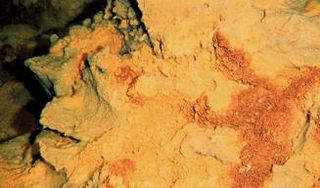Related Research Articles

Seagrasses are the only flowering plants which grow in marine environments. There are about 60 species of fully marine seagrasses which belong to four families, all in the order Alismatales. Seagrasses evolved from terrestrial plants which recolonised the ocean 70 to 100 million years ago.

A continental shelf is a portion of a continent that is submerged under an area of relatively shallow water, known as a shelf sea. Much of these shelves were exposed by drops in sea level during glacial periods. The shelf surrounding an island is known as an insular shelf.

Halomonadaceae is a family of halophilic Pseudomonadota.

Gammaproteobacteria is a class of bacteria in the phylum Pseudomonadota. It contains about 250 genera, which makes it the most genus-rich taxon of the Prokaryotes. Several medically, ecologically, and scientifically important groups of bacteria belong to this class. All members of this class are Gram-negative. It is the most phylogenetically and physiologically diverse class of the Pseudomonadota.
Marinobacter is a genus of bacteria found in sea water. They are also found in a variety of salt lakes. A number of strains and species can degrade hydrocarbons. The species involved in hydrocarbon degradation include M. alkaliphilus, M. arcticus, M. hydrocarbonoclasticus, M. maritimus, and M. squalenivorans.

The class Zetaproteobacteria is the sixth and most recently described class of the Pseudomonadota. Zetaproteobacteria can also refer to the group of organisms assigned to this class. The Zetaproteobacteria were originally represented by a single described species, Mariprofundus ferrooxydans, which is an iron-oxidizing neutrophilic chemolithoautotroph originally isolated from Kamaʻehuakanaloa Seamount in 1996 (post-eruption). Molecular cloning techniques focusing on the small subunit ribosomal RNA gene have also been used to identify a more diverse majority of the Zetaproteobacteria that have as yet been unculturable.
Algoriphagus is a genus in the phylum Bacteroidota (Bacteria).
Hoeflea marina is a Gram-negative, oxidase- and catalase-positive, non-spore-forming, rod-shaped bacteria from the genus of Hoeflea which was isolated from marine environments in Germany. Agrobacterium ferrugineum was reclassified to Hoeflea marina.

Halophila stipulacea is a species of seagrass in the Hydrocharitaceae family. It is native to the Indian Ocean that spread into the Mediterranean after the opening of the Suez Canal. This seagrass is widespread through the Gulf of Aqaba. Recently it has arrived in the Caribbean where it is also spreading.
Erythrobacteraceae is a bacterium family in the order of Sphingomonadales.
Ji Hee Kim is a Korean Antarctic researcher, best known for being the Principal Investigator for comprehensive environmental monitoring and construction of the long term environmental database at South Korea's King Sejong Station.
Micromonospora maris is a Gram-positive bacterium from the genus Micromonospora which has been isolated from deep-sea sediments from the Sea of Japan. Verrucosispora maris produces abyssomicins and proximicins.
Altererythrobacter is a bacterial genus from the family Erythrobacteraceae.
Pontixanthobacter luteolus is a Gram-negative, halophilic and non-spore-forming bacterium from the genus Pontixanthobacter which has been isolated from tidal flat from the Yellow Sea in Korea.
Cyclobacterium is a mesophilic, neutrophilic, chemoorganotrophic and aerobic bacterial genus from the family of Cyclobacteriaceae. Cyclobacterium bacteria occur in marine habitats
Desulfocella halophila is a halophilic bacterium from the genus of Desulfocella which has been isolated from sediments from the Great Salt Lake in the United States.
Celeribacter halophilus is a Gram-negative and non-motile bacterium from the genus of Celeribacter which has been isolated from seawater from the coastal region of Qingdao in China.
Halocynthiibacter is a genus of bacteria in the family Rhodobacteraceae.
Paraglaciecola agarilytica is a Gram-negative, slightly halophilic and aerobic bacterium from the genus Paraglaciecola which has been isolated from sediments from the Sea of Japan.
The Temperatibacteraceae are a family of bacteria.
References
- ↑ LSPN lpsn.dsmz.de
- ↑ "Straininfo of Hoeflea halophila". Archived from the original on 2014-05-06. Retrieved 2014-03-29.
- ↑ Jung, M. Y.; Shin, K. S.; Kim, S; Kim, S. J.; Park, S. J.; Kim, J. G.; Cha, I. T.; Kim, M. N.; Rhee, S. K. (2013). "Hoeflea halophila sp. nov., a novel bacterium isolated from marine sediment of the East Sea, Korea". Antonie van Leeuwenhoek. 103 (5): 971–8. doi:10.1007/s10482-013-9876-6. PMID 23314912. S2CID 14678849.
- ↑ UniProt